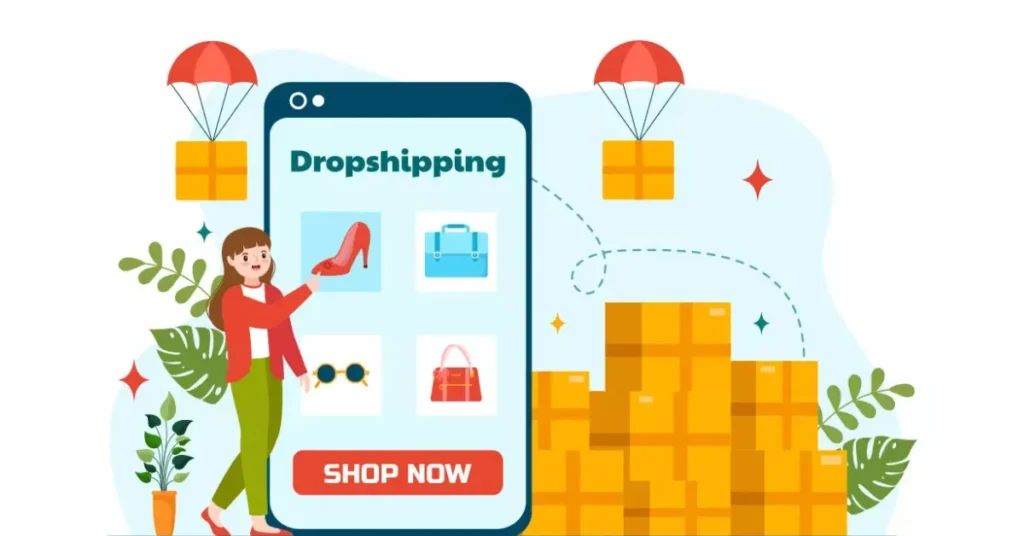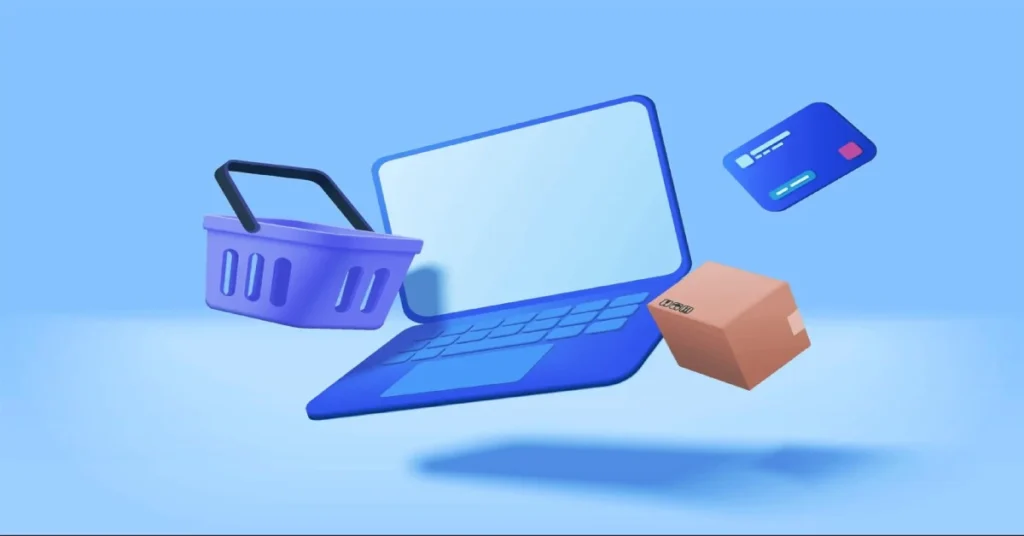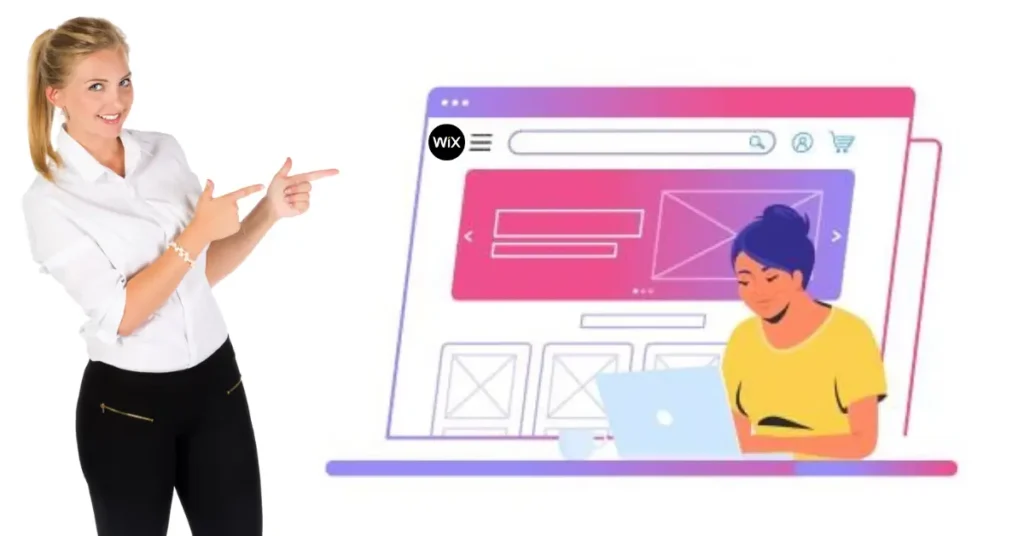Have you ever wondered how some online stores seem to connect effortlessly with passionate creators, turning their enthusiasm into real sales? Or perhaps, as a creator, you’ve dreamed of working with amazing brands, getting paid for sharing products you genuinely love? Shopify Collabs offers a direct answer to these questions for businesses and content creators right here in the United States.
I’ve explored the exciting world of Shopify Collabs, and I want to share how this platform simplifies the process of building powerful relationships that drive growth in the dynamic US eCommerce landscape. It’s more than just a tool; it’s a bridge connecting innovation with authentic voices, helping brands reach new customers and creators build sustainable income.
What is Shopify Collabs and How Does It Work?

At its heart, Shopify Collabs is a powerful, built-in application that connects Shopify merchants with content creators for influencer marketing and affiliate partnerships. Think of it as a central hub inside your Shopify admin where you can discover, manage, and pay creators who promote your products. It’s designed to be an all-in-one solution, making the process of building these relationships straightforward and efficient.
Here’s a shorter, paragraph-by-paragraph summary suitable for citation:
Shopify Collabs automates creator payments, adding commissions as “Shopify Collabs Commission” to the merchant’s Shopify bill. This system handles affiliate commissions from unique links or codes, with a customizable holding period (1-90 days) before billing, ensuring secure and timely payouts to creators via their chosen method (e.g., PayPal or bank transfer). (Shopify Help Center, “Payments”)
A 2.9% processing fee is applied to each automatic commission payment, appearing on the Shopify bill. For US-based creators, Shopify Collabs can request W9 forms, and failure to submit may limit annual payouts to $599.99 USD. As of January 8, 2024, Shopify Collabs exclusively uses automated payments, eliminating manual payment options. (Shopify Help Center, “Payments”)
Merchants can customize commission rates and track sales performance within the platform. Shopify may intervene in disputes or guideline violations, potentially holding or canceling payouts until resolution.
Defining Shopify Collabs
Shopify Collabs streamlines what used to be a complex, manual process. It allows brands to:
- Find and connect: Discover creators who align with their brand values and audience.
- Create compelling offers: Set up commission rates or offer free products for promotion.
- Manage campaigns: Track the performance of individual creators and overall initiatives.
- Automate payments: Handle payouts seamlessly, reducing administrative burden.
For creators, it’s a dedicated portal to:
- Discover new brands: Find exciting products to share with their audience.
- Apply for collaborations: Submit proposals to brands directly through the platform.
- Track earnings: Monitor commissions and receive automated payouts.
This integration within Shopify makes it especially powerful for US-based businesses already running their online stores on the platform. It eliminates the need to juggle multiple third-party tools, bringing everything under one roof.
The Merchant Experience: A General Overview
As a merchant, your journey with Shopify Collabs begins inside your Shopify admin. You activate the app, set up your brand profile, and then you’re ready to create collaboration opportunities. You can decide if you want to offer a commission on sales, send free products, or perhaps a mix of both. The platform lets you define your terms clearly.
Once your offers are ready, you can start looking for creators. Shopify Collabs provides tools to help you search for individuals based on their audience size, engagement rates, and the type of content they create. When you find a creator who seems like a good fit, you can invite them to join your program. The system then tracks their unique links or discount codes, so you know exactly how many sales or clicks they generate for your products. This means accurate performance measurement and smooth, automated payouts directly through your Shopify bill.
The Creator Experience: A General Overview
For creators, joining Shopify Collabs is a simple process. You create a profile that showcases your content style, audience demographics, and social media platforms. Think of this as your digital resume for brands.
Once your profile is active, you can browse a marketplace of Shopify brands looking for collaborators. You can filter by product category, commission type, or even look for specific brands you admire. When you find a brand that excites you, you can apply to their program. If approved, you will receive unique affiliate links or discount codes to share with your audience. As your audience uses these links or codes to make purchases, you earn commissions. Shopify Collabs tracks these sales and handles the payments directly, often through PayPal or bank transfer, ensuring you get paid for your hard work without chasing invoices.
Why Shopify Collabs Matters for Your Business

Shopify Collabs is more than a convenience; it’s a strategic tool for growth in the competitive US eCommerce market. It taps into the power of authentic recommendations, which resonate strongly with American consumers.
Key Benefits for US Merchants
Consider these advantages if you run an online store in the United States:
- Increased Brand Awareness & Reach: Creators have dedicated audiences. When they share your products, you instantly access new, engaged communities you might not reach through traditional ads. This expands your presence across various social platforms popular in the US, like TikTok, Instagram, and YouTube.
- Sales Growth & ROI: Recommendations from trusted creators often lead to higher conversion rates. A Shopify report from 2025 noted that creator-generated revenue for brands like Solgaard grew by 287% month-over-month using Shopify Collabs, and Duradry saw a 29% decrease in customer acquisition costs. This indicates a strong return on investment.
- Cost-Effectiveness: Influencer marketing can be a more efficient use of your marketing budget compared to broad advertising campaigns. You pay for performance (commissions) or for specific content (gifting), making your spend more targeted.
- Simplified Management: The platform centralizes communication, tracking, and payments. You no longer need complex spreadsheets or separate tools to manage each creator relationship. This saves time and reduces potential errors, allowing you to focus on your products.
- Authentic Content Generation: Creators produce genuine, relatable content featuring your products. This user-generated content often feels more trustworthy and engaging than traditional advertising, building stronger connections with potential customers.
We often think in broad categories when discussing success. However, Shopify Collabs truly opens doors for various US businesses, from the small, local artisan making handcrafted goods to a growing beauty brand targeting a specific demographic. For instance, imagine a small organic coffee roaster in the Pacific Northwest using Collabs to partner with food bloggers nationwide, showcasing their brewing process and sustainable sourcing practices. Or a handmade jewelry designer in Texas finding fashion micro-influencers who adore unique, artisanal pieces. The platform allows for pinpointing those perfect fits, ensuring your message lands with the right people, no matter your niche or size in the US market.
Key Benefits for US Creators
If you’re a content creator in the US, Shopify Collabs offers exciting opportunities:
- Access to Top Shopify Brands: You gain direct entry to a vast network of legitimate eCommerce businesses, from established names to exciting new ventures. This removes the guesswork of finding trustworthy brands.
- Monetization Opportunities: You can earn commissions on sales generated through your unique links or codes, providing a direct revenue stream. Many brands also offer gifted products, allowing you to try new items and create authentic content.
- Streamlined Collaboration: The platform simplifies the entire partnership process, from applying to programs to tracking your earnings. You can spend less time on administration and more time creating compelling content.
- Performance Tracking: Transparent analytics show you exactly how your efforts translate into sales. This data helps you understand what resonates with your audience, refine your strategy, and prove your value to brands.
- Building Your Portfolio: Successful collaborations through Shopify Collabs add valuable experience and measurable results to your creator portfolio, opening doors to even more exciting partnerships.
Getting Started with Shopify Collabs

Getting up and running with Shopify Collabs is straightforward. I’ll walk you through the specifics for both merchants and creators, with a particular eye on how to excel in the US market.
For US Merchants: Detailed Onboarding & Optimization
You’ve got a fantastic product, and now you want to spread the word. Here’s how you can make Shopify Collabs work powerfully for your US-based store:
1. Initial Setup & Profile Optimization: Your brand’s profile is your first impression. Think of it as your virtual handshake with potential creators. You need to make it inviting, especially for US creators.
- Creating a Compelling Brand Profile: Clearly articulate your brand’s story, values, and mission. Why do you exist? What problem do you solve? For US creators, highlight aspects that might resonate culturally, like your commitment to sustainability, supporting local communities, or unique American craftsmanship. Include details about your target audience – are they Gen Z in urban areas, or suburban millennials? The more specific you are, the better.
- Adding High-Quality Media: Visuals matter. Upload professional photos and videos that showcase your products beautifully. Consider lifestyle shots that envision your products being used in everyday US settings, showing, not just telling, what your brand is all about. A brand selling outdoor gear might show their products in national parks, while a beauty brand could feature diverse US models.
2. Crafting Effective Collaboration Offers: This is where you define how creators will work with you and how they’ll be compensated.
- Setting Up Commission Rates: Shopify Collabs allows you to set clear commission percentages or fixed amounts. Consider industry benchmarks for affiliate marketing in the US, which can range from 5% to 30% depending on your product’s price and margin. For example, a luxury item might offer a higher percentage to incentivize creators.
- Utilizing the Gifting Feature: Sometimes, sending a free product is more impactful, especially for newer creators or those focused on product reviews. Think strategically: which products make the best content? How can you make the gifting process seamless for a creator based across the country? You might send a complimentary item for a review, or a set of items for a social media takeover.
- Developing Compelling Campaign Briefs: Don’t just send a product and hope for the best. Provide clear instructions. What kind of content are you looking for? What key messages should they include? Are there specific US holidays or seasonal themes you want to align with (e.g., Memorial Day sales, back-to-school promotions)? Give them creative freedom, but guide their efforts.
3. Finding and Vetting US Creators: This is where the magic happens – connecting with the right voices for your brand.
- Leveraging “Open Access” vs. Targeted Invitations: Open Access allows any creator to apply, which is great for building a large network. Targeted invitations mean you handpick creators you want to work with. For specific campaigns, especially those targeting particular US demographics, targeted invitations often yield better results.
- Utilizing Creator Search Filters: Shopify Collabs provides robust filters. Use them! Search by:
- Audience Location: Focus on “United States” to ensure your content reaches local consumers.
- Niche: Are you looking for fashion, beauty, tech, or sustainable living creators?
- Platform Strength: Do you need someone strong on Instagram, TikTok, or YouTube?
- Engagement Rates: Look beyond follower count. High engagement means a more active and responsive audience.
- Tips for Evaluating US Creators: Look at their past content. Does it feel authentic? Do they engage with their comments? Do their values align with yours? A creator who consistently promotes products unrelated to their niche might not be the best fit, even if their follower count is high.
4. Managing Campaigns & Measuring ROI (US Context): Once collaborations are underway, tracking their impact is essential for your US business.
- Monitoring Sales, Conversions, and Traffic: The Shopify Collabs dashboard gives you real-time data. You can see which creators are driving sales, how much traffic their links generate, and overall conversion rates.
- Understanding the Analytics Dashboard: Regularly review the insights provided. Which content formats perform best? Are certain product categories more popular through creator channels?
- Deeper Dive into Calculating ROI: Here’s where we can go beyond the basics. To truly understand your return, think about your customer acquisition cost (CAC) for other marketing channels. If Shopify Collabs helps you acquire customers for less, that’s a win. Consider the lifetime value (LTV) of customers acquired through creators. Are these customers more loyal or do they have higher average order values? Also, think about the brand lift – how much more recognizable or trusted your brand becomes due to creator endorsements. This is harder to quantify but incredibly valuable.
For US Creators: Maximizing Your Potential
If you’re a creator in the US, eager to partner with brands and monetize your influence, here’s how to make the most of Shopify Collabs:
1. Building a Standout Collabs Profile: Your profile is your pitch to brands. Make it shine!
- Showcasing Your Niche, Content Style, and Audience Demographics: Be crystal clear about who you are and who your audience is. For example, “I’m a Gen Z fashion creator focused on sustainable streetwear for urban dwellers in New York City” is far more impactful than “I do fashion content.” Provide details on your audience’s age, gender, location (especially within the US), and interests.
- Connecting All Relevant Social Media Platforms: Link all your active channels – Instagram, TikTok, YouTube, Pinterest, blog, etc. Brands want to see your reach and content consistency across platforms.
- Why This Matters: Brands are looking for creators who can connect with their ideal customers. A strong, detailed profile makes it easy for them to find you and understand your value.
2. Strategizing Your Brand Applications: Don’t just apply to every brand. Be strategic!
- Researching US Brands that Align: Look for brands whose products you genuinely love and whose values resonate with yours. If you’re a vegan food creator, applying to a meat jerky brand likely won’t work. Authenticity is key.
- Crafting Personalized Application Messages: Avoid generic copy-pasting. Briefly explain why you want to work with their specific brand, how their products fit your content, and how you envision promoting them to your unique US audience. For instance, “I see your hand-poured candles fitting perfectly into my ‘cozy home decor’ series, which my followers in the Northeast love during winter.”
3. Creating Engaging Content for US Audiences: Once you’re approved, it’s time to create!
- Tips for Authentic Product Integration: Don’t just hold up a product. Show how you use it in your daily life. Tell a story. Share your honest experience. This builds trust with your audience.
- Understanding US Consumer Preferences: Research what kind of content performs best on different platforms for American consumers. Is it short, punchy TikTok videos? In-depth YouTube reviews? Visually appealing Instagram carousels? Stay updated on current trends. For example, video commerce and live streaming are booming in the US, with live stream sales estimated to make up over 5% of all eCommerce sales in North America by 2026.
- Producing High-Quality, Conversion-Focused Content: Good lighting, clear audio, and engaging editing make a difference. Make it easy for your audience to find the product – clearly display your affiliate link or discount code.
4. Understanding Payments & Tax Implications: Getting paid is exciting, but understanding the financial side is important.
- How Commission Payouts Work: Shopify Collabs tracks sales and processes commissions automatically. Payouts typically happen after a holding period (e.g., 30 days) to account for returns.
- US Tax Obligations for Affiliate Income: If you earn over a certain amount ($600 in most cases) from a single merchant in a calendar year, you will likely receive a Form 1099-NEC from them for tax purposes. As a creator, you are considered an independent contractor. You must report this income on your tax return. It’s always best to consult with a tax professional in the US to ensure full compliance with federal and state tax laws. Shopify does provide tools for merchants to collect W9 forms from US creators to help with this process, but ultimately, the responsibility for reporting your income is yours.
Navigating Legal and Ethical Considerations in the US

Transparency and trust are paramount in influencer marketing, especially in the United States, where consumer protection laws are strict.
FTC Disclosure Requirements for Influencers
This is a critical area for anyone working with brands in the US. The Federal Trade Commission (FTC) has clear guidelines to ensure consumers know when content is paid for or sponsored.
- Detailed Explanation of FTC Guidelines: If you have a “material connection” to a brand (meaning you’ve received money, free products, or any other perk in exchange for a mention), you must disclose it clearly and conspicuously. This is not optional.
- Proper Use of Disclosure Hashtags: Use clear hashtags like
#ad,#sponsored, or#ShopifyCollabsPartner. Placing them at the very beginning of a caption or video, where they are impossible to miss, is the safest approach. Don’t bury them in a long list of hashtags or only put them in your profile. - Consequences of Non-Compliance: Both creators and merchants can face penalties from the FTC for failing to disclose. This can range from warnings to fines, and it can severely damage your reputation.
Shopify Collabs Community Guidelines
Beyond government regulations, Shopify Collabs has its own set of rules designed to foster a healthy and trustworthy environment. These guidelines cover areas like:
- Authentic Content: You must produce original content and genuinely promote products.
- Engaging with Audiences: You should be actively building and engaging with your audience, not just running automated campaigns.
- Respectful Interactions: Both merchants and creators are expected to communicate professionally and respectfully.
Following these guidelines ensures a positive experience for everyone on the platform.
Dispute Resolution
While Shopify Collabs aims for smooth collaborations, disagreements can happen. The platform has a process for handling disputes between merchants and creators, often involving communication and resolution directly through the app. Understanding this process means you know what steps to take if an issue arises.
Shopify Collabs vs. Other Influencer Platforms

Shopify Collabs is a fantastic tool, but it’s one of many. I often get asked how it compares to other solutions. My answer: it depends on your specific needs, especially when operating in the US.
When Shopify Collabs Shines
Shopify Collabs is a powerhouse for:
- Shopify Merchants: If your store runs on Shopify, the built-in nature of Collabs is a huge advantage. It’s integrated directly into your workflow, making management incredibly simple.
- Direct-to-Consumer (DTC) Brands: For brands selling directly to consumers, Collabs offers a straightforward way to scale influencer and affiliate marketing without complex integrations.
- Affiliate Programs & Gifting: It excels at managing these programs, from commission tracking to automated payouts and product gifting.
When Other Platforms Might Be a Better Fit
Some other platforms might be more suitable for:
- Enterprise-Level Brands: Larger companies with complex global campaigns, needing highly advanced AI-powered discovery, deep CRM functionalities, or intricate cross-platform analytics might look at platforms like CreatorIQ or Mavrck. These can handle massive volumes and provide incredibly granular data, but often come with a much higher price tag and a steeper learning curve.
- Brands Not on Shopify: If your store is on a different eCommerce platform, then a Shopify-specific tool simply won’t work for your core operations.
- Broader Influencer Networks: While Shopify Collabs has a growing creator database, some platforms, like Aspire, might offer a larger, more diverse pool of creators across different niches, or specific tools for managing complex campaigns outside of just affiliate marketing. GRIN focuses heavily on relationship management, which can be invaluable for brands wanting to cultivate long-term partnerships with influencers beyond single campaigns.
To illustrate, consider a US-based fashion brand that only sells on Shopify. Shopify Collabs allows them to easily send their new collection to 50 micro-influencers across the country, track sales from each, and pay them automatically. Now, imagine a large, multinational tech company with a complex sales funnel that includes B2B and B2C channels, selling across multiple countries and platforms. They might need a platform like CreatorIQ to manage thousands of influencers globally, integrate with their existing CRM, and analyze data across various marketing touchpoints.
Ultimately, the choice depends on your specific needs, the scale of your operations, and your budget. My advice is to identify your core goals. Do you want to simplify affiliate management on Shopify? Collabs is a top contender. Do you need highly complex influencer relationship management across numerous platforms? Then a more specialized tool might be a better fit.
Advanced Strategies & Future Trends for US Users
The world of eCommerce and influencer marketing is always changing. Here’s how you can stay ahead using Shopify Collabs, focusing on trends and strategies relevant to the US market.
Optimizing for Mobile-First & Video Commerce
Most US consumers browse and shop on their phones. Video content continues to dominate.
- Importance of Mobile-Responsive Experiences: Ensure your product pages and checkout flows are flawless on mobile. A seamless mobile experience means higher conversion rates from creator-driven traffic.
- Leveraging Video Content: Encourage creators to produce engaging short-form videos for TikTok, Instagram Reels, and YouTube Shorts. These platforms are incredibly popular in the US and drive significant purchasing decisions. Consider how your products look and function in a quick, dynamic video.
- Strategies for Live Shopping Collaborations: Live commerce is booming. Partner with creators who host live streams on TikTok Live or Instagram Live. Offer exclusive discount codes during these sessions to drive immediate sales and track performance. Imagine a beauty brand hosting a live makeup tutorial with an influencer, allowing viewers to buy products directly from the stream.
According to Forbes Tech Council, how Live Shopping Is Changing the Retail Landscape Across the Globe Live shopping is revolutionizing retail by blending e-commerce with real-time video, creating an interactive and immersive experience that caters to evolving consumer habits. This dynamic approach significantly boosts customer engagement, builds trust through direct interaction, and often leads to higher conversion rates due to urgency-driven promotions and impulsive purchases. (Forbes Tech Council, “How Live Shopping Is Changing the Retail Landscape Across the Globe”)
This trend transforms shopping into “shoppertainment,” making the process more enjoyable and increasing viewing times. It offers global reach, overcoming geographical limitations for retailers, and provides valuable data on consumer behavior. The integration of influencers and advancements in streaming, AR, and AI further enhances the experience, while also democratizing retail by empowering smaller businesses.
Want to ensure your product pages shine as brightly as your creator collaborations? After securing those fantastic partnerships through Shopify Collabs, you’ll need a way to build stunning, high-converting product pages and landing sites. For an in-depth look at how you can craft a truly unique and engaging shopping experience, check out our recent post on the Shopify Shogun Page Builder.
Integrating with Other US Marketing Tools
While Shopify Collabs is powerful, it’s not isolated. Think about how it connects with your other marketing efforts.
- Workflows with Email Marketing Platforms: When a creator drives a sale, consider how you can capture that customer’s email (with their permission) and integrate them into your existing email marketing flows. Popular US platforms like Klaviyo or Mailchimp can automate welcome sequences, post-purchase follow-ups, and loyalty programs.
- Analytics and CRM Systems: You might use other analytics tools for a broader view of your customer data or CRM systems for managing customer relationships. Can you export data from Shopify Collabs to feed into these systems? This helps you understand the full customer journey and attribute sales correctly, rather than relying solely on Collabs’ internal tracking. This provides a holistic view of your marketing impact.
Sustainability & Cause-Driven Partnerships
US consumers increasingly care about a brand’s values. A recent Shopify report noted that 66% of consumers will pay more for sustainable brands.
- Collaborating with Eco-Focused Creators: Seek out creators who champion sustainability, ethical sourcing, or social causes that align with your brand. For example, a clothing brand using recycled materials could partner with a sustainable fashion influencer to tell their story.
- Highlighting Brand Values: Through creator content, showcase your brand’s commitment to social responsibility. This can build deeper connections with values-driven US consumers.
Long-Term Relationship Building
Think beyond one-off campaigns. The most successful partnerships are built on trust and mutual benefit.
- Nurturing Ongoing Partnerships: Regularly communicate with your top-performing US creators. Share updates on new products, offer exclusive early access, and provide ongoing support.
- Fostering Loyal Brand Ambassadors: Over time, convert your best creators into long-term brand ambassadors. These individuals become true advocates for your brand, providing consistent, authentic content that builds lasting trust with their audience.
Conclusion: Empowering Your eCommerce Journey with Shopify Collabs in the US
Shopify Collabs offers a direct, integrated pathway to build powerful connections and drive sales for businesses of all sizes across the United States. From simplifying how merchants discover and pay creators to empowering content creators with transparent earning opportunities, it represents a modern approach to growing an online business.
This platform isn’t just about transactions; it’s about building relationships. By fostering authentic collaborations between passionate brands and trusted voices, Shopify Collabs helps both parties thrive in the dynamic and ever-evolving US eCommerce landscape. It gives you the tools to create impact, reach new audiences, and build a community around your products.
So, are you ready to explore the possibilities?





